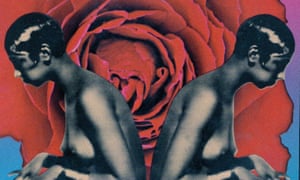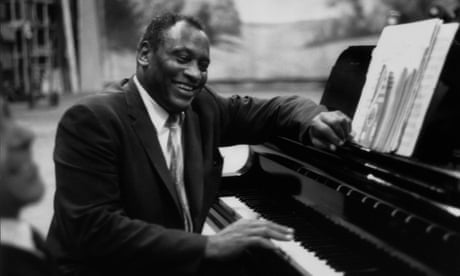Ishmael Reed's 1972 novel Mumbo Jumbo mobilises a history of culture which
recognises African antecedents to a specific African-American tradition, but as this
history of culture focuses on the notion of 'possession', as exemplified by the Afrodiasporan system of voodoo, the notion that an African history could constitute a history
of' origins' is revealed to be rather ridiculous. The figure of being 'possessed', or of
'going out of one's head' is used equally well in this novel to indicate vodoun rites as it is
to signify the function of memory, and similarly, emphasises the fluidity of any perceived
'difference' between these concepts. Reed's figure of 'Jes Grew' may be imagined to be
a collective term for possessive forces, as well as for the state of being possessed, and
while it is linked to a tradition specific to African-American, Caribbean and African
cultures, it is also a state which may be known to anyone who is able to present the right
frame of mind to receive it. As a memory of Africa can be 'remembered' within the
terms of a linear history, then, memory also functions as 'possessive' action, allowing a
connection to Africa to arise at any given moment. Reed draws a history of culture back
to Ancient Egypt in this novel, thereby presenting a tradition, but at the same time sends
up any tendency to attach this tradition to the sign of 'blackness', as indicative of a
narrow, "Atonist", notion of signification which perceives the relationship between
language and memory as purely linear. Reed makes a profoundly comic commentary
upon the notion of African 'origins' here, as he situates Africa not as the site of the
33
origins of African diasporan culture, but of the' Atonist' perspective itself which he
figures as a particularly Euro-American neurosis toward tradition and the past.
As the novel's "anti-plague",l Jes Grew is figured in the novel as both a distinct tradition
and a possessive force which appears in discrete historical moments, and Reed "turn[s] to
Egypt not just as proof of a black African past but as a model for contemporary
spirituality and culture", and imagines "each moment [ ... ] in a kind of continuous
awareness of and interdependence with the others".2 In this novel which spoofs the hardboiled detective story genre,3 not least by drawing 'back to Africa' an extremely
convoluted history of a plague which manifests itself in instances of "suggestive bumping
and grinding" and "wild abandoned spooning" (22), Reed must be seen to be responding
with laughter to earnest attempts to discover something 'meaningful' about culture by
way of deciphering histories of 'origins'. So J es Grew is shown to characterise the 1920s
'Harlem Renaissance' - "The Blues is a Jes Grew, as James Weldon Johnson surmised.
Jazz was a Jes Grew which followed the Jes Grew of Ragtime. Slang is a Jes Grew too."
(214) It is also shown to be both a repetition of and a parallel to previous eras, as the end
of the novel also depicts the 1970s as a time when "Jes Grew was [again] latching onto
its blood" (216), and its lineage is furthermore charted to an Ancient Egyptian "theater
accompanying [ ... ] agriculturalists' rites" (161). Even as Jes Grew is shown to be
illustrative of an African-American and African tradition, it is also a possessive force-
"'Jes Grew is life" (204) itself - and the novel shows that it can arise at any given
moment, and is available to anyone who presents the frame of mind to receive it. The
memory of Africa is thus felt to be intrinsic to an African-American tradition, to be the
site of a form of life depicted as 'natural', and yet also to be the site of a confrontation
between a fluid form of memory, and what is presented as the 'unnatural' attitudes
toward the past represented by Atonism.
Reed's perspective in this novel is rooted in a tradition he calls "N eo Hoodoo because it
doesn't begin with me", 4 and which is related to voodoo, which Reed regards as a
"common language" which "not only united the Africans but also made it easier for them
to forge alliances with those Native Americans whose customs were similar".5
Explaining that "hoodoo involved art [ ... ,]dancing, painting, poetry, it was multimedia",6 Reed understands it to be "what Black Americans came up with", "as opposed
to Obeahism in Jamaica and other islands and Voodooism in Haiti", 7 but that it is still
"based upon African forms of art". 8 For Reed, Helen Lock explains,
Neo-HooDoo's purpose is to give new life to marginalized and apparently moribund
cultural sensibilities, as Jes Grew had become, by fusing African and Euro-American aesthetic traditions into a new African-American aesthetic, according to which orality and
literacy, past and present, fonn and spirit are all equally privileged, and cultural integrity
both preserved intact and enriched. "This is what my writing is all about. It leads me to
the places where I can see old cultures resurrected and made contemporary. Time past is
time present".
CONTINUE READING CHAPTER ONE
http://wrap.warwick.ac.uk/4110/1/WRAP_THESIS_Kamali_2007.pdf
Spectres of the Shore: The Memory of Africa in
Contemporary African-American and Black British
Fiction
by
Leila Francesca Kamali
A thesis submitted in partial fulfilment of the requirements for
the degree of
Doctor of Philosophy
In
English and Comparative Literary Studies
University of Warwick,
Department of English and Comparative Literary Studies
May 2007
CONTINUE READING CHAPTER ONE
http://wrap.warwick.ac.uk/4110/1/WRAP_THESIS_Kamali_2007.pdf
Spectres of the Shore: The Memory of Africa in
Contemporary African-American and Black British
Fiction
by
Leila Francesca Kamali
A thesis submitted in partial fulfilment of the requirements for
the degree of
Doctor of Philosophy
In
English and Comparative Literary Studies
University of Warwick,
Department of English and Comparative Literary Studies
May 2007

